Panama
Eastern Standard Time (EST), UTC−5 year-round
No daylight saving time observed
Sunrise ~06:00, sunset ~18:00
Panamanian Balboa (PAB) and US Dollar (USD)
USD widely accepted, especially in tourist areas
ATMs and credit cards accepted in most places
Tipping customary 10–15%
November 3 – Independence Day (from Colombia, 1903)
Celebrated with parades, civic ceremonies, and cultural performances
Visa-Free Countries
Visa on Arrival Countries
E-Visa Countries
Visa Required Countries
Culture
Panama’s culture reflects a melting pot of Indigenous, African, Spanish, and immigrant influences, with Afro-Panamanians playing a significant role in the nation’s identity. The country’s vibrant folklore is celebrated in music and dance, such as the traditional tamborito rhythm, a fusion of African drumming and Spanish influences. Panama is home to various indigenous groups like the Ngöbe, Buglé, and Kuna, each contributing to the country’s cultural richness. The cuisine blends corn, beans, rice, and tropical fruits with ingredients brought by European settlers and African slaves. A variety of festivals and holidays, such as Carnival and the Panama Jazz Festival, showcase the country’s diverse roots. Panama’s thriving arts scene is seen in local handicrafts, including vibrant molas (handmade textiles) from the Kuna people, pottery, and goldwork.
- Music & Dance: Traditional music includes the Afro-Panamanian tamborito and the Panamanian cumbia. The Panama Jazz Festival is one of the largest annual events.
- Language & Identity: Spanish is the official language, with indigenous languages like Ngöbe, Buglé, and Kuna also spoken in their respective regions.
- Crafts & Art: Mola textiles, pottery, wood carvings, and handwoven baskets are traditional handicrafts from indigenous cultures.
- Cuisine: Traditional dishes like sancocho (chicken stew), arroz con pollo (rice with chicken), and tamales reflect the country’s agricultural heritage.
- Religion & Customs: A predominantly Catholic country, Panama celebrates religious festivals like Semana Santa (Holy Week) with vibrant parades and events.
Tourism & Best Sites to Visit
Panama is famous for its stunning landscapes, from its lush rainforests and picturesque beaches to the modern skyline of Panama City. Whether you’re exploring the historic old town, strolling along beaches, or crossing the famous Panama Canal, there’s something for every type of traveler.
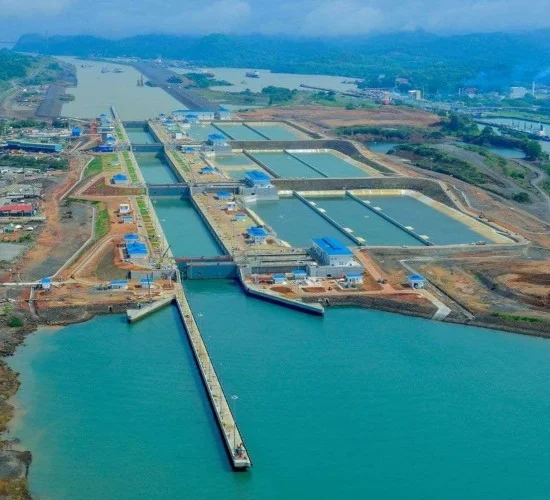
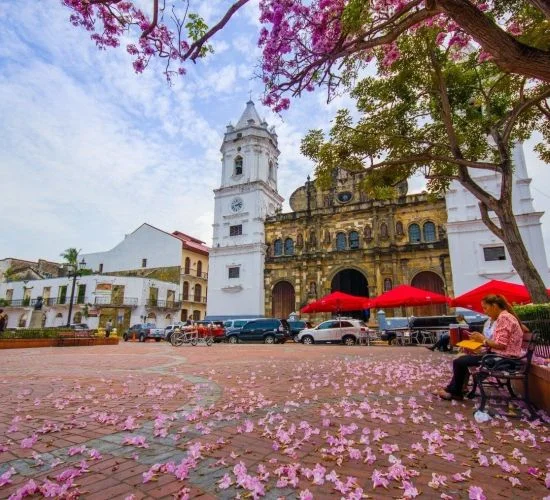
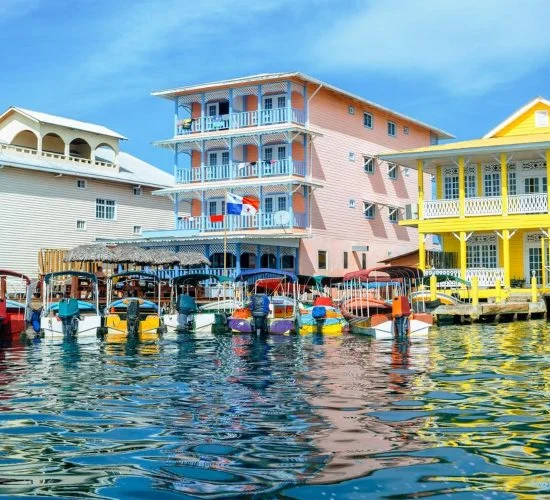
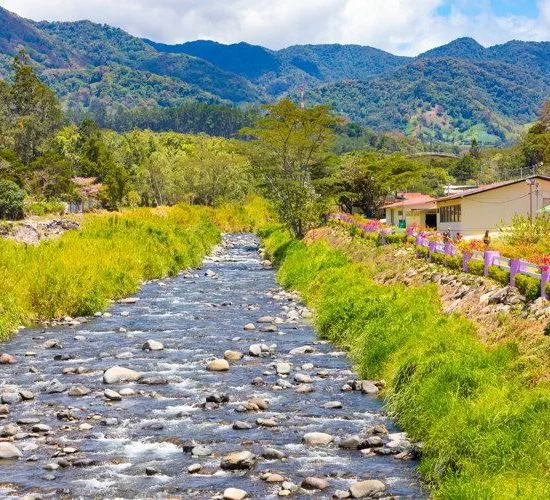
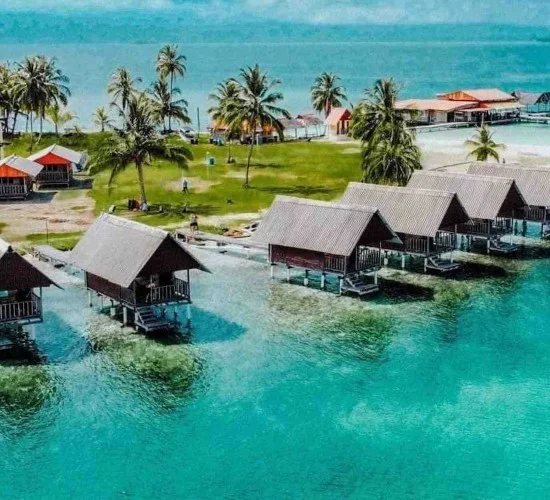
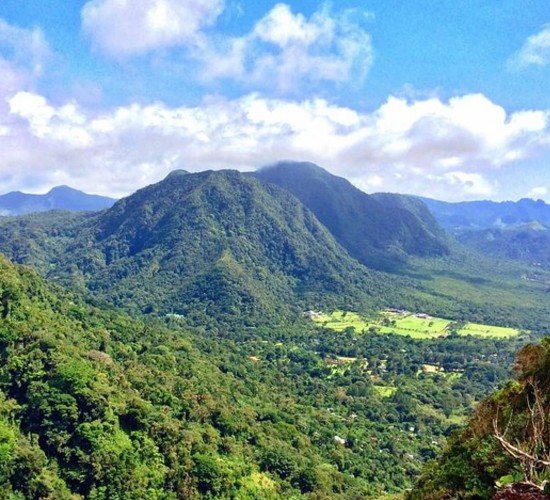
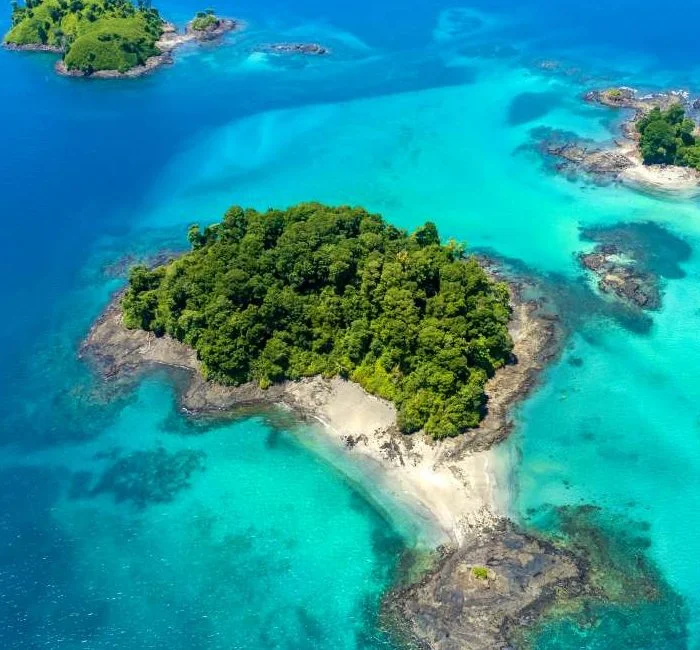
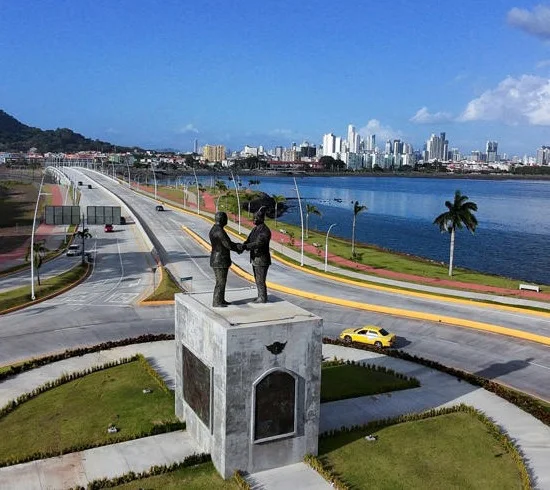
-
Panama Canal
One of the world's most impressive engineering feats, the Panama Canal connects the Atlantic and Pacific Oceans and remains a major transit route for international trade. Visitors can watch massive ships navigate the locks at the Miraflores Locks Visitor Center, learn about the canal’s construction at the Panama Canal Museum, or take a boat tour along the canal. The Canal Zone also features beautiful walking paths and informative exhibits about its impact on global commerce and Panama’s history. -
Casco Viejo
Casco Viejo, the historic center of Panama City, is a UNESCO World Heritage site known for its cobblestone streets, colorful colonial buildings, and vibrant atmosphere. Visitors can explore landmarks such as the Metropolitan Cathedral, the National Theatre, and the famous Plaza Francia. The area is filled with trendy restaurants, rooftop bars with panoramic views, and small boutiques offering local crafts. Casco Viejo offers a blend of history, culture, and modern development. -
Bocas del Toro
Located on the Caribbean side of Panama, Bocas del Toro is an archipelago famous for its pristine beaches, crystal-clear waters, and laid-back vibe. Visitors can enjoy snorkeling, surfing, and kayaking, or relax in one of the many beachfront hotels. The islands are home to diverse wildlife, including sea turtles, dolphins, and a variety of bird species. The town of Bocas Town offers a vibrant nightlife, with bars, restaurants, and a lively expat community. -
Boquete
A picturesque town nestled in the Chiriquí Highlands, Boquete is known for its cool climate, coffee plantations, and stunning mountain scenery. Visitors can take tours of the local coffee farms, hike to waterfalls and volcanoes, or explore the town’s bustling market. Boquete is a popular destination for nature lovers and those looking for an escape from the heat of Panama City. The town also hosts the annual Flower and Coffee Festival, celebrating the region’s agricultural heritage. -
San Blas Islands
The San Blas Islands, also known as Guna Yala, are an idyllic tropical paradise off Panama's Caribbean coast. With over 300 islands, most uninhabited, the region is home to the indigenous Guna people. Visitors can enjoy stunning beaches, snorkeling, and cultural experiences, such as learning about the Guna people's traditional ways of life and weaving techniques. The islands offer a remote, peaceful retreat surrounded by nature. -
El Valle de Antón
El Valle de Antón is a charming town located in the crater of an extinct volcano in the Coclé Province. The area is known for its cool climate, hot springs, and diverse wildlife. Visitors can hike to the top of the Sleeping Indian Girl Mountain for panoramic views or explore the nearby waterfalls and botanical gardens. The town is also home to a popular artisan market where visitors can buy handmade crafts and local products. -
Coiba National Park
Located off the Pacific coast of Panama, Coiba National Park is a UNESCO World Heritage site and one of the most biodiverse areas in Central America. The park is famous for its pristine beaches, crystal-clear waters, and abundant marine life, including sharks, rays, and turtles. Visitors can explore the park by boat, snorkeling or diving around the coral reefs, or hiking through the lush forests that cover the islands. -
Torrijos-Carter Monument
The Torrijos-Carter Monument in Panama City commemorates the signing of the Torrijos-Carter Treaties in 1977, which led to the eventual handover of the Panama Canal from the United States to Panama in 1999. The monument is an important symbol of Panama’s sovereignty and its relationship with the U.S. The site is located near the former Canal Zone and provides a historical perspective on Panama's political and economic development.
Transportation
Panama boasts an efficient transportation network that connects major cities, tourist destinations, and the Panama Canal. Public buses, taxis, and ride-hailing services like Uber provide convenient travel within cities. The country also has a well-established domestic flight network and a ferry service connecting islands. Public transport in Panama City includes the metro system, while the Panama Canal Authority operates boat tours through the canal. Car rentals are widely available, and roads are generally in good condition, though some areas, especially in rural regions, may require four-wheel-drive vehicles.
- Public Buses: Colorful buses serve major routes throughout Panama City and the provinces.
- Taxis & Ride-hailing: Taxis are common in urban areas; Uber operates in Panama City for convenience.
- Domestic Flights: Copa Airlines connects Panama City with major cities in the region; small regional flights serve outlying islands.
- Ferries & Water Taxis: Ferries run between the mainland and islands like Bocas del Toro and the San Blas Islands.
- Car Rentals: Available at major airports and in cities; recommended for exploring rural or remote areas.
Airports
Panama is well-connected to international and regional destinations through its main airport and regional hubs. The international airport in Panama City is one of the busiest in Central America.
- Panama Tocumen International Airport (PTY): The main international gateway to Panama, located about 24 km from Panama City. It offers flights to Europe, North America, and major cities in Latin America.
- Panama Pacifico International Airport (BLB): A secondary airport near Panama City that handles international flights, particularly to the U.S. and Central America.
- David Enrique Malek International Airport (DAV): Serving the western province of Chiriquí, this regional airport offers domestic flights to Panama City and nearby destinations.
- Bocas del Toro International Airport (BOC): Located on Isla Colón, this airport serves the Caribbean archipelago of Bocas del Toro, with flights from Panama City and Costa Rica.
Visa & Travel
| Nationality/Region | Entry Status | Max Stay | Key Requirements |
|---|---|---|---|
| USA, Canada, EU, CARICOM | Visa Free | Up to 90 days | Valid passport (≥6 months), return/onward ticket, proof of funds |
| Other countries | Visa Required | Varies | Apply at Panamanian consulate; invitation letter, proof of accommodation, funds |
| Transit (all nationalities) | Transit Allowed | Up to 24 hours | Confirmed onward ticket |
Health: No mandatory vaccines unless arriving from yellow fever-endemic countries. Recommended vaccinations: hepatitis A and B, typhoid, routine immunizations. Malaria and dengue prevention advised in rural areas.
Customs: Duty-free limits include 200 cigarettes or 50 cigars, 1 liter of spirits, and gifts up to USD $500. Restrictions on agricultural products and animals.
Safety Tips: Panama is considered safe for tourists, though it's always advisable to stay cautious in crowded areas and avoid isolated regions at night.
Money Matters: The US Dollar is widely accepted; ATMs available in major cities. Credit cards accepted in most establishments in tourist areas.
Etiquette: Polite greetings with "Buenos días" or "Buenas tardes" are appreciated. Always ask permission before photographing people or cultural ceremonies.
- Asia
- Singapore
- Japan
- South Korea
- Africa
- Seychelles
- Mauritius
- South Africa
- Contact:
- Address: Eighth Avenue Place, East Tower, 525 8 Avenue SW Suite 3200 Calgary, Alberta T2P 1G.
- Email: Info@theazmip.com
- Number: +12812363495
Travel the World Without the Burden of Visa Applications, as TheAzmip.com Connects You to the Best Visa-Free Destinations.
- North America
- United States
- Canada
- Mexico
- Oceania
- Australia
- New Zealand
- Samoa

